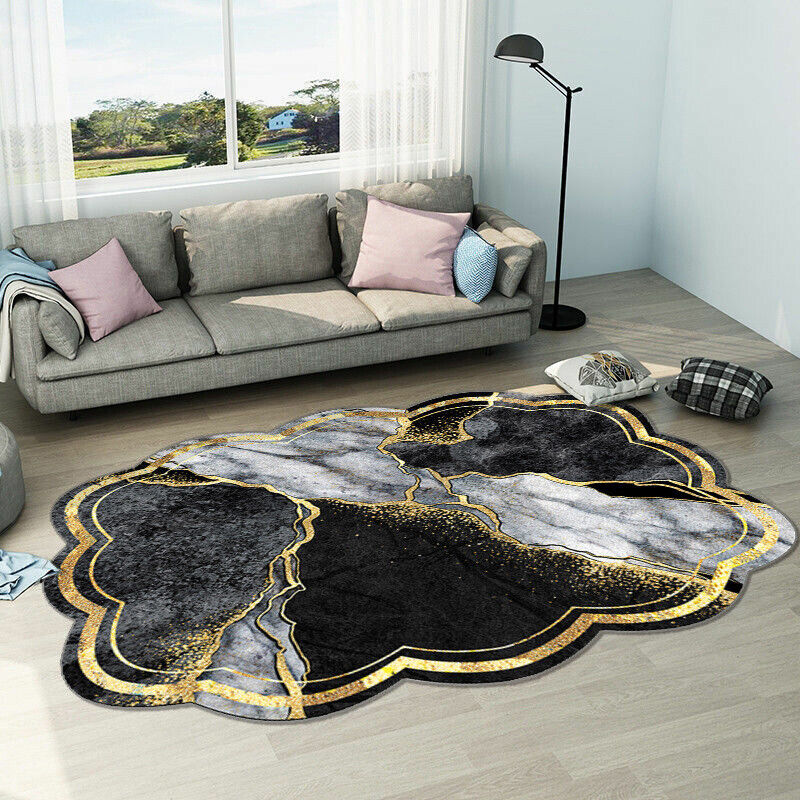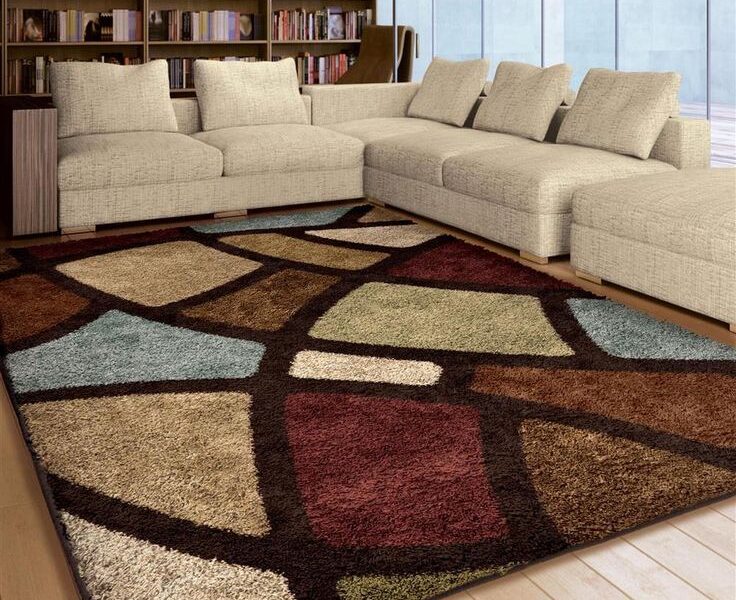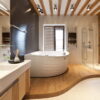A rug is more than just a piece of fabric on the floor—it’s an essential element of interior design that can transform a room’s ambiance, tie together various decor elements, and provide comfort underfoot. Whether you’re looking to add warmth to a cozy living room, define areas in an open-plan space, or simply protect your flooring, the right rug can make all the difference. In this guide, we will explore everything you need to know about choosing the perfect rug for your home, from understanding different types of rugs to selecting the right size, pattern, and material for your needs.
Why Rugs Matter in Interior Design
Rugs play a crucial role in interior design for several reasons:
Visual Anchor
Rugs serve as a visual anchor in a room, defining spaces and creating a focal point that draws the eye.
Comfort
They add a layer of softness and warmth, making hard flooring like tile, hardwood, or laminate more comfortable to walk on.
Acoustics
Rugs can help reduce noise in a room by absorbing sound, which is particularly beneficial in large or open-plan spaces.
Style and Personality
With countless designs, colors, and patterns available, rugs offer a way to express your style and add character to your home.
Types of Rugs
Understanding the different types of rugs available will help you make an informed choice when shopping for the perfect piece.
1 Area Rugs
Area rugs are the most common type of rug, typically used to define a seating or dining area. They come in various sizes, often ranging from 5×8 feet to 9×12 feet, and are versatile enough to be used in almost any room.
2 Runner Rugs
Runner rugs are long and narrow, designed to fit hallways, staircases, and narrow spaces like entryways. They help guide the flow of traffic and can add a decorative element to often-overlooked areas.
3 Accent Rugs
Accent rugs are small rugs used to add a pop of color or pattern to a space. They are often placed in front of a doorway, in a small seating area, or under a coffee table to enhance the room’s decor.
4 Outdoor Rugs
Outdoor rugs are made from durable, weather-resistant materials like polypropylene or recycled plastic. They are perfect for patios, decks, or outdoor dining areas, adding style and comfort to your outdoor living spaces.

Rug Placement
Materials of Rugs
The material of a rug affects its look, feel, durability, and maintenance requirements. Here’s an overview of popular rug materials:
1 Wool Rugs
Wool is a natural fiber known for its softness, durability, and warmth. Wool rugs are resilient, naturally stain-resistant, and maintain their appearance over time. They are ideal for high-traffic areas and come in a variety of styles and patterns.
2 Cotton Rugs
The design and color of your rug play a crucial role in shaping the room’s overall look. Here’s how to select the perfect option:They are often used in casual settings like kitchens, bathrooms, or children’s rooms. However, cotton rugs may not be as durable as wool or synthetic options and can wear out faster in high-traffic areas.
3 Silk Rugs
Silk rugs are luxurious, with a soft texture and a lustrous sheen that adds elegance to any room. However, they are more delicate and expensive than other materials, making them best suited for low-traffic areas like bedrooms or formal living rooms.
4 Synthetic Rugs
Synthetic rugs, made from materials like nylon, polyester, and polypropylene, are durable, stain-resistant, and often more affordable than natural fiber rugs. They are a practical choice for families with kids or pets, as they can withstand heavy use and are easy to clean.
5 Jute and Sisal Rugs
Jute and sisal are natural fibers that create sturdy, eco-friendly rugs with a rustic, textured appearance. These rugs are ideal for adding a natural, earthy vibe to your space. However, they can be rough underfoot and are less stain-resistant than other materials.
Choosing the Right Rug Size
Selecting the correct rug size is crucial for creating a balanced and harmonious look in your room. Here’s how to choose the right size for different spaces:
1 Living Room Rugs
For living rooms, your rug should be large enough to fit all the furniture’s front legs or all legs on it. A common size for living rooms is 8×10 feet or 9×12 feet, depending on the size of the room and furniture layout. This placement anchors the seating area and creates a cohesive look.
2 Bedroom Rugs
In bedrooms, a rug should extend at least 18-24 inches beyond the sides of the bed. A 9×12-foot rug works well for a king or queen bed, while a 5×8-foot rug may be suitable for a smaller bed. Alternatively, you can use runners on either side of the bed for a soft landing when you get up in the morning.
3 Dining Room Rugs
For dining rooms, choose a rug that is large enough to accommodate the dining table and chairs, even when the chairs are pulled out. A rug that is at least 8×10 feet is usually a good choice, depending on the size of your table.

Rug Placement
Rug Patterns and Colors
The pattern and color of your rug can significantly influence the room’s overall aesthetic. Here’s how to choose the right one:
1 Solid Colors
Solid-colored rugs are versatile and can complement a variety of decor styles. They work well in spaces with patterned furniture or walls, providing a subtle backdrop that allows other elements to stand out.
2 Geometric Patterns
Geometric patterns add a modern and dynamic touch to a room. These rugs are perfect for contemporary or minimalist spaces, where they can serve as a statement piece without overwhelming the decor.
3 Floral and Abstract Patterns
Floral and abstract patterns bring a touch of artistry and creativity to your space. These rugs are ideal for adding visual interest to neutral rooms or complementing a bohemian or eclectic design style.
4 Stripes and Plaid
Striped and plaid rugs are classic and timeless, offering a traditional yet stylish look. Stripes can elongate a room, making it appear larger, while plaid adds a cozy, inviting feel.

Rug Placement
Rug Placement Tips
Proper rug placement is key to achieving a polished and well-designed space. Here are some tips for placing rugs in different areas of your home:
1 Centering a Rug in the Living Room
In a living room, center your rug with the seating area to create a cohesive and balanced look. Ensure that at least the front legs of your furniture rest on the rug to tie the arrangement together.
2 Placing a Rug Under a Bed
When placing a rug under a bed, position it so that it extends beyond the sides and foot of the bed. This creates a luxurious feel and adds warmth to the room. Alternatively, you can place two runners on either side of the bed.
3 Using Rugs in Hallways and Entryways
In hallways and entryways, use runner rugs to guide traffic and add a decorative element. Ensure the rug is long enough to cover most of the hallway or entryway without leaving too much bare floor exposed.
Rug Maintenance and Care
Regular upkeep is crucial to ensure your rug stays in top condition.Here’s how to care for your rug:
Regular Cleaning Tips
Vacuum Regularly
Vacuum your rug at least once a week to remove dust and dirt.In high-traffic areas, you may need to vacuum more often to keep the rug clean.
Shake Out Small Rugs
For small rugs, take them outside and give them a good shake to remove dust and debris.














